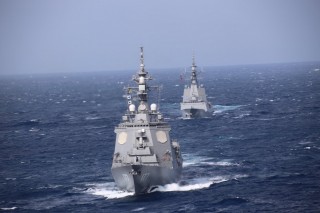Loading
Search
▼ Japan And Australia Strengthen Security Cooperation
- Category:Other
Since the signing of the Joint Declaration on Security Cooperation in 2007, Australia and Japan have grown closer through joint training exercises between the Japan Self-Defense Force (JSDF) and the Australian Defence Force (ADF). And the Australia-Japan relationship has entered a new chapter in recent years.
First, in 2021, JSDF units could protect ADF equipment, such as naval vessels and aircraft, with weapons. This was one of the major achievements in the series of security-related legislative amendments made by the then Abe administration in 2015, which established a provision in the Japan Self Defense Forces Law that allows the JSDF to protect the equipment of other countries’ armed forces with weapons.
In addition, the Japan Maritime Self-Defense Force (JMSDF) destroyer “Inazuma” was reported in Japanese media to have carried out a mission to guard the Royal Australian Navy (RAN) frigate “Ballarat” during a joint Japan-Australia drill in November 2021. This was the first time the JSDF provided such protection to anyone other than the US military.
Because Japan’s constitution limits the use of force, this form of defense is solely meant for attacks by armed groups, such as terrorists, that occur during peacetime.
However, according to the Japanese government’s understanding, protection is available even when the attacker’s identity is unknown, such as in a surprise attack. This means, for example, that even if the assailant is a member of another country’s military forces, the protection can be extended until the perpetrator is recognized.
Also, in January 2022, the Japanese government announced that it had signed the Japan-Australia Reciprocal Access Agreement (RAA) with the Australian government. Regarding the contents of the RAA, Japan’s Ministry of Foreign Affairs has issued the following statement:
“The Japan-Australia RAA is an agreement which establishes in particular procedures between Japan and Australia for the cooperative activities conducted by defense force of one country while visiting the other country and defines the status of the visiting force. With its entry into force, the Japan-Australia RAA will facilitate the implementation of cooperative activities between the defense forces of the two countries and further promote bilateral security and defense cooperation. The agreement will also pave the way for an enhanced contribution by Japan and Australia to the peace and stability of the Indo-Pacific region.”
Japan’s Ministry of Foriegn Affairs
This RAA will make it easier for the JSDF and ADF to travel to and from each other, and easier for them to conduct various activities, including joint exercises.
With these new developments, JSDF and ADF will further deepen their cooperation. For example, there will be more opportunities for JMSDF destroyers to protect RAN vessels, and RAN vessels will make more frequent port visits to Japan to receive replenishment.
Since the Abe administration, Japan has continued to maintain its position of working with countries other than the US to counter the Chinese threat. Australia is seen as a key partner in this effort.
First, in 2021, JSDF units could protect ADF equipment, such as naval vessels and aircraft, with weapons. This was one of the major achievements in the series of security-related legislative amendments made by the then Abe administration in 2015, which established a provision in the Japan Self Defense Forces Law that allows the JSDF to protect the equipment of other countries’ armed forces with weapons.
In addition, the Japan Maritime Self-Defense Force (JMSDF) destroyer “Inazuma” was reported in Japanese media to have carried out a mission to guard the Royal Australian Navy (RAN) frigate “Ballarat” during a joint Japan-Australia drill in November 2021. This was the first time the JSDF provided such protection to anyone other than the US military.
Because Japan’s constitution limits the use of force, this form of defense is solely meant for attacks by armed groups, such as terrorists, that occur during peacetime.
However, according to the Japanese government’s understanding, protection is available even when the attacker’s identity is unknown, such as in a surprise attack. This means, for example, that even if the assailant is a member of another country’s military forces, the protection can be extended until the perpetrator is recognized.
Also, in January 2022, the Japanese government announced that it had signed the Japan-Australia Reciprocal Access Agreement (RAA) with the Australian government. Regarding the contents of the RAA, Japan’s Ministry of Foreign Affairs has issued the following statement:
“The Japan-Australia RAA is an agreement which establishes in particular procedures between Japan and Australia for the cooperative activities conducted by defense force of one country while visiting the other country and defines the status of the visiting force. With its entry into force, the Japan-Australia RAA will facilitate the implementation of cooperative activities between the defense forces of the two countries and further promote bilateral security and defense cooperation. The agreement will also pave the way for an enhanced contribution by Japan and Australia to the peace and stability of the Indo-Pacific region.”
Japan’s Ministry of Foriegn Affairs
This RAA will make it easier for the JSDF and ADF to travel to and from each other, and easier for them to conduct various activities, including joint exercises.
With these new developments, JSDF and ADF will further deepen their cooperation. For example, there will be more opportunities for JMSDF destroyers to protect RAN vessels, and RAN vessels will make more frequent port visits to Japan to receive replenishment.
Since the Abe administration, Japan has continued to maintain its position of working with countries other than the US to counter the Chinese threat. Australia is seen as a key partner in this effort.
- January 20, 2022
- Comment (0)
- Trackback(0)


